
BIBLIOGRAPHY
1 FORM AND MATTER
Bierlein, John C. The Journal Bearing, Scientific American, (July 1975) Vol. 233, No. 1, p. 50.
Cameron, A. Basic Lubrication Theory. London: Longman Press, 1971.
Gamow, George. One, Two, Three, Infinity, Facts and Speculations of Science. New York: The New American Library, 1947.
Hansen, Jans Jurgen (ed.). Architecture in Wood, trans. Janet Seligman. New York: Viking Press, 1971.
Hitchcock, H. In the Nature of Materials. New York: Sloan, 1942.
Hoffman, Branesh. The Strange Story of the Quantum. New York: Dover Publications, Inc., 1958.
Hsiung Li, Wen, and Lai Lam Sau. Principles of Fluid Mechanics. Reading, Massachusetts: Addison-Wesley Publishing Co., Inc., 1964.
Landon, J.W. Examples in the Theory of Structure.London: Cambridge University Press, 1932.
Wulff, John (ed.). The Structure and Properties of Materials (4 Vols.). New York: John Wiley and Sons, Inc., 1966.
2 STRUTS AND TIES
Beresford, Evans J. Form in Engineering Design. London: Oxford, The Clarendon Press, 1954.
Goss, Charles Mayo (ed.) Grays Anatomy. Philadelphia: Lea and Febiger, 1959.
Gray, J. Studies in Animal Locomotion, The Propulsive Powers of the Dolphin, The Journal of Experimental Biology. Vol. 13, No. 2 (1936), pp. 192-199.
Griffin, Donald R. et. al. Readings from Scientific American, Animal Engineering. San Francisco: W.H. Freeman and Co., 1974.
Hammond, Rolt. The Forth Bridge and Its Builders. Covent Gardens, England: Eyre and Spottiswoode Ltd., 1964.
Lawrence, J. Fogel. Biotechnology: Concepts and Applications. Englewood Cliffs, Prentice Hall, 1963.
Museum of Modem Art, The. The Architecture of Bridges. New York: The Museum of Modem Art, 1949.
Nervi, Pier Luigi. Structures and Designs, trans. Giuseppina and Mario Salvadori. New York: McGraw-Hill, 1956.
Roland, Conrad. Frei Otto: Structures. London: Longman Press, 1970.
Salvadori, M. and R. Heller. Structure in Architecture. New Jersey: Englewood Cliffs: Prentice Hall, Inc., 1965.
Seigel, Curt. Structure and Form in Modern Architecture. New York: Reinhold Publishing Corporation, 1962.
Torroja, E. Philosophy of Structures. Berkeley: University of California Press, 1958.
Whitney, Charles S. Bridges, a Study of Their Art, Science and Evolution. New York: Rudge, 1929.
3 SIZE
Bland, John. Forests of Lilliput: The Realm of Mosses and Lichens. New Jersey, Englewood Cliffs: Prentice Hall, 1971.
Conel, J. LeRoy. Life as Revealed by the Microscope, an Interpretation of Evolution. New York: Philosophical Library, 1969
Curtis, Helena. The Marvelous Animals. Garden City, New York: Natural History Press, 1968.
Gluck, Irvin. Optics. New York: Holt, Rinehart and Winston, Inc., 1964.
Soleri, Paolo. Sketchbook of Paolo Soleri. Cambridge, Mass.: M.I.T. Press, 1971.
4 THE FORMS OF FUNCTION
Doblin, Jay. One Hundred Great Product Designs. New York: Van Nostrand Reinhold Co., 1970.
Greenough, Horatio. Form and Function. Berkeley, California: University of California Press, 1957.
Pye, David. The Nature of Design. New York: Reinhold Publishing Corporation, 1964.
Rand, Paul. Thoughts on Design. New York: Van Nostrand Reinhold Co., 1970.
Royce, Joseph. Surface Anatomy. Philadelphia: F.A. Davis Co., 1973.
5 THE GENERATIONS
Barnett, Homer G. Personal Conflicts and Cultural Change, Social Force, Vol. 20, (Dec. 1941), pp. 160-171.
Derry, T., and Trevor I. Williams. A Short History of Technology. New York: Oxford University Press, 1961.
Goodman, W.L. The History of Woodworking Tools. New York: David McKay Co., Inc., 1964.
Gould, Stephen Jay. The Pandas Thumb. New York: W.W. Norton and Co., 1980.
King, Franklin Hiram. Farmers of Forty Centuries. Emmaus, PA: Rodale Press, 1973.
Oakley, Kenneth P. Man the Tool Maker, 3rd ed. Chicago, IL: University of Chicago Press, 1964.
Sagan, Carl. The Dragons of Eden. New York: Random House, 1977.
Soulard, Robert. A History of the Machine. New York: Hawthorn Books, Inc., 1963.
Usher, A. P. A History of Mechanical Inventions. Cambridge: Harvard University Press, 1954.
6 THE ECOPHENOTYPIC EFFECT
Ballentyne, D. and D.R. Lovell. A Dictionary of Named Effects and Laws in Chemistry, Physics, and Mathematics. London: Chapman & Hall, 1920.
Ferebee, Ann. A History of Design From the Victorian Era to the Present. New York: Van Nostrand Reinhold Co., 1970.
Reynolds, John. Windmills and Watermills. New York: Praeger, 1970.
Rudofski, Bernard. Architecture Without Architects. New York: Doubleday, 1964.
Spicer, E.H. Human Problems in Technological Change. New York: Russell Sage Foundation, 1952.
7 TELEOLOGY
Bager, Bertel. Nature as Designer, trans. Albert Read. New York: Van Nostrand Reinhold Co., 1966.
Bates, Marston. The Forest and the Sea, the Economy of Nature and Man. New York: Vintage Books, 1960.
Feininger, A. Anatomy of Nature. New York: Crown, 1956.
Honda, Hisao, and Jack B. Fisher. Tree Branch Angle: Maximizing Effective Leaf Area, Science Magazine (24 February 1978), Vol. 199, pp. 888-890.
Huntley, H.E. The Divine Proportion. New York: Dover Publications, 1970.
Jenny, Hans. Cymatics. Basel: Basilius Presse, 1967.
McMahon, Thomas. The Mechanical Design of Trees, Scientific American, (July 1975), Vol. 233, No. 1, pp. 92.
Noble, J. Purposive Evolution. New York: Henry Holt Co., 1926.
Ritchie, J. Design in Nature. New York: Scribners, 1937.
Schneer, C.J. Search For Order. New York: Harper, 1960.
Schwenk, Theodor. Sensitive Chaos. London: Rudolf Steiner Press, 1965.
Sinnott, Edmund W. The Problems of Organic Form. New Haven, Conn.: Yale University Press, 1963.
Stevens, Peters. Patterns in Nature. Boston: Little Brown and Co., 1947.
Strache, W. Forms and Patterns in Nature. New York: Pantheon, 1956.
Weizsacker, C.F. The History of Nature. Chicago: Phoenix, 1949.
Weyl, Hermann. Symmetry. Princeton: Princeton University Press, 1952.
8 CHANCE AND THE IRRATIONAL
Baum, Robert J. Philosophy and Mathematics. San Francisco: Freeman, Cooper and Co.,
King, Amy, and Cecil Read. Pathways to Probability. New York: Holt, Reinhart and Winston, 1965.
Mandelbrot, Benoit B. Fractals, Form, Chance, and Dimension. San Francisco: W.H. Freeman and Co., 1977.
Spaulding, Gleasson. A World of Chance. New York: MacMillan and Co.
Young, Norwood. Fortuna, Chance and Design. New York: E.P. Dutton and Co., 1928.
Schopf, Thomas M. (ed.). Models in Paleobiology. San Francisco: Freeman, Cooper, and Co., 1972.
MULTIPLE CHAPTERS
Beebe, C.W. The Bird, Its Form and Function. New York: Henry Holt and Co., 1906. (2, 7)
Borrego, John. Space Grids Structures. Cambridge, Mass: The M.I.T. Press, 1968. (2, 7)
Boys, C.V. Soap Bubbles. New York: Dover Pub., Inc., 1959. (2, 7)
Critchlow, Keith. Order in Space. New York: The Viking Press, 1969. (2, 7)
Giedion, Siegfried. Mechanization Takes Command. New York: Oxford University Press, 1948. (4, 5, 6)



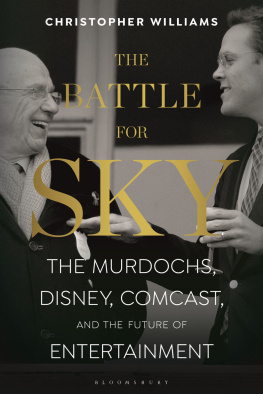
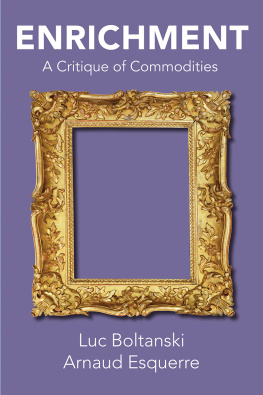
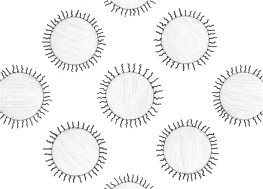
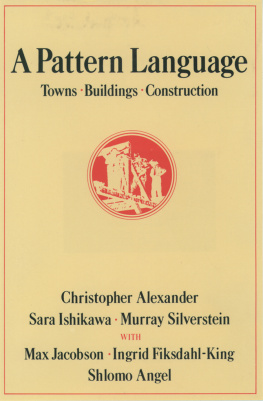

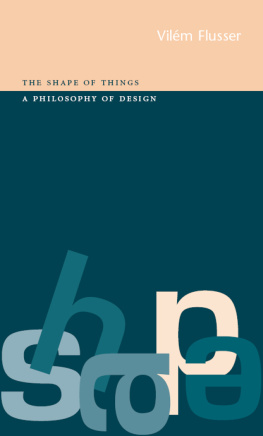


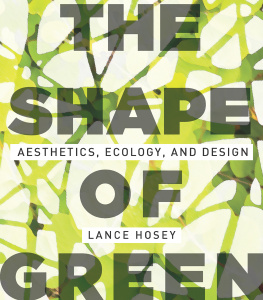
 BIBLIOGRAPHY
BIBLIOGRAPHY